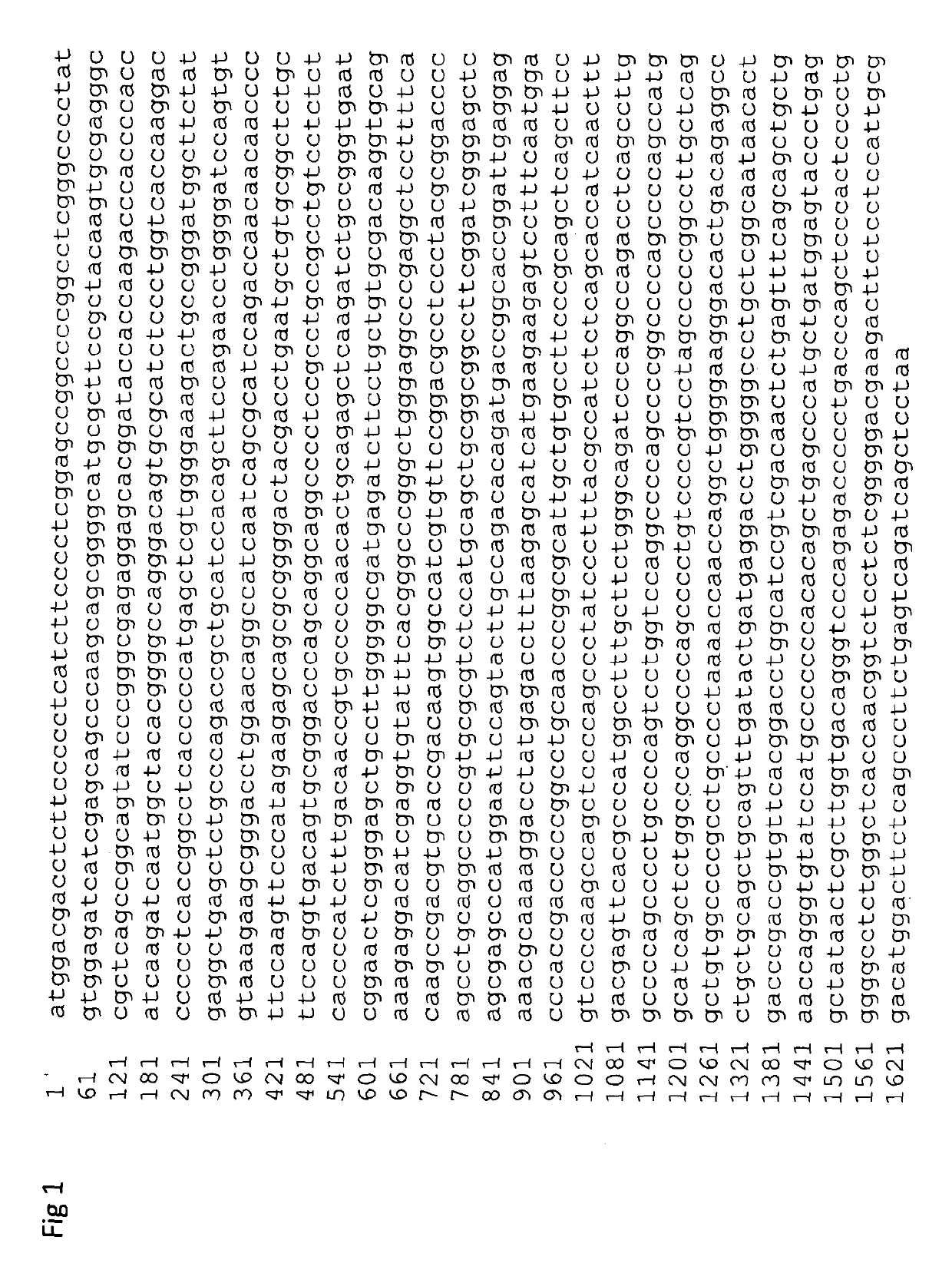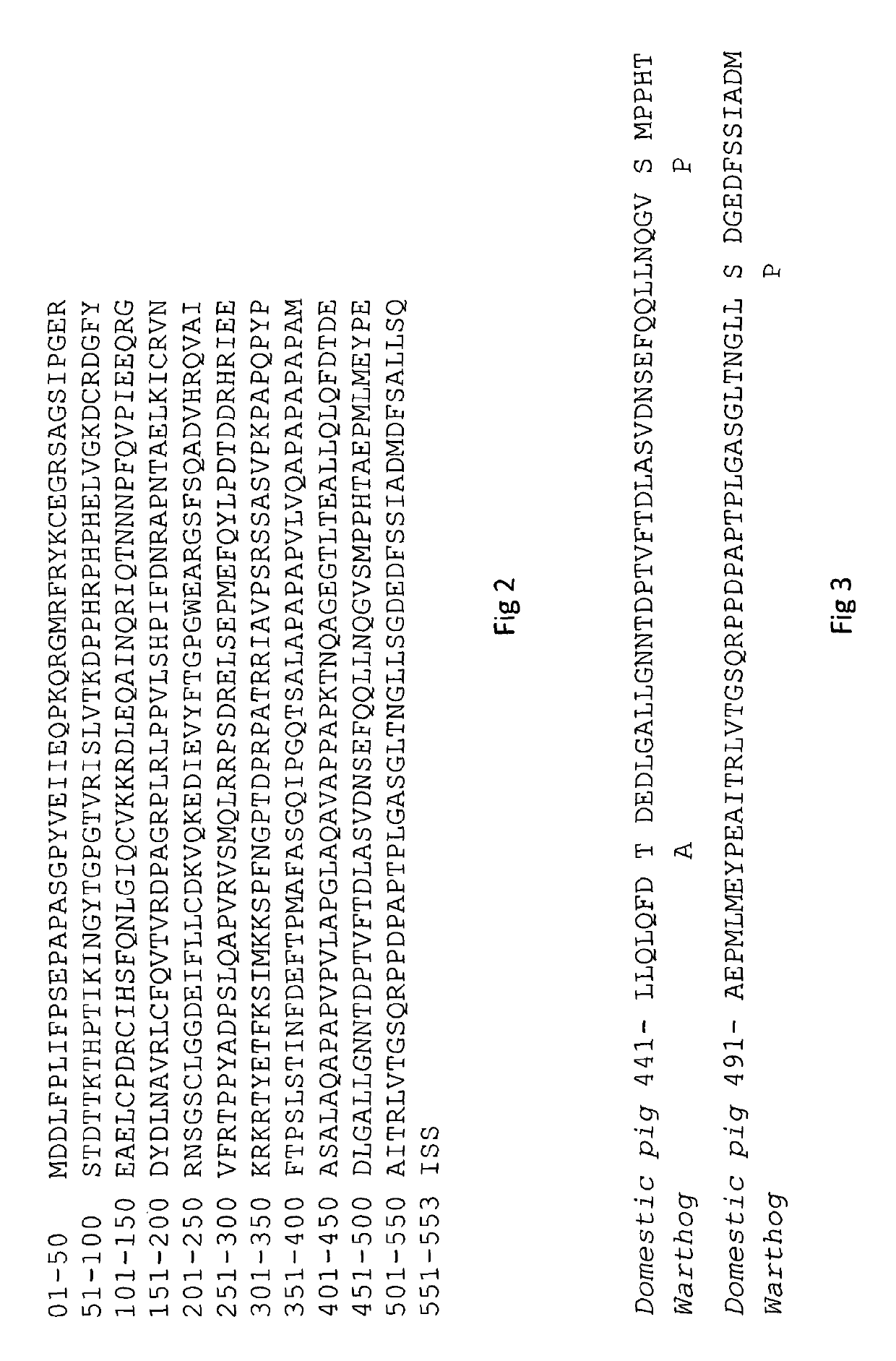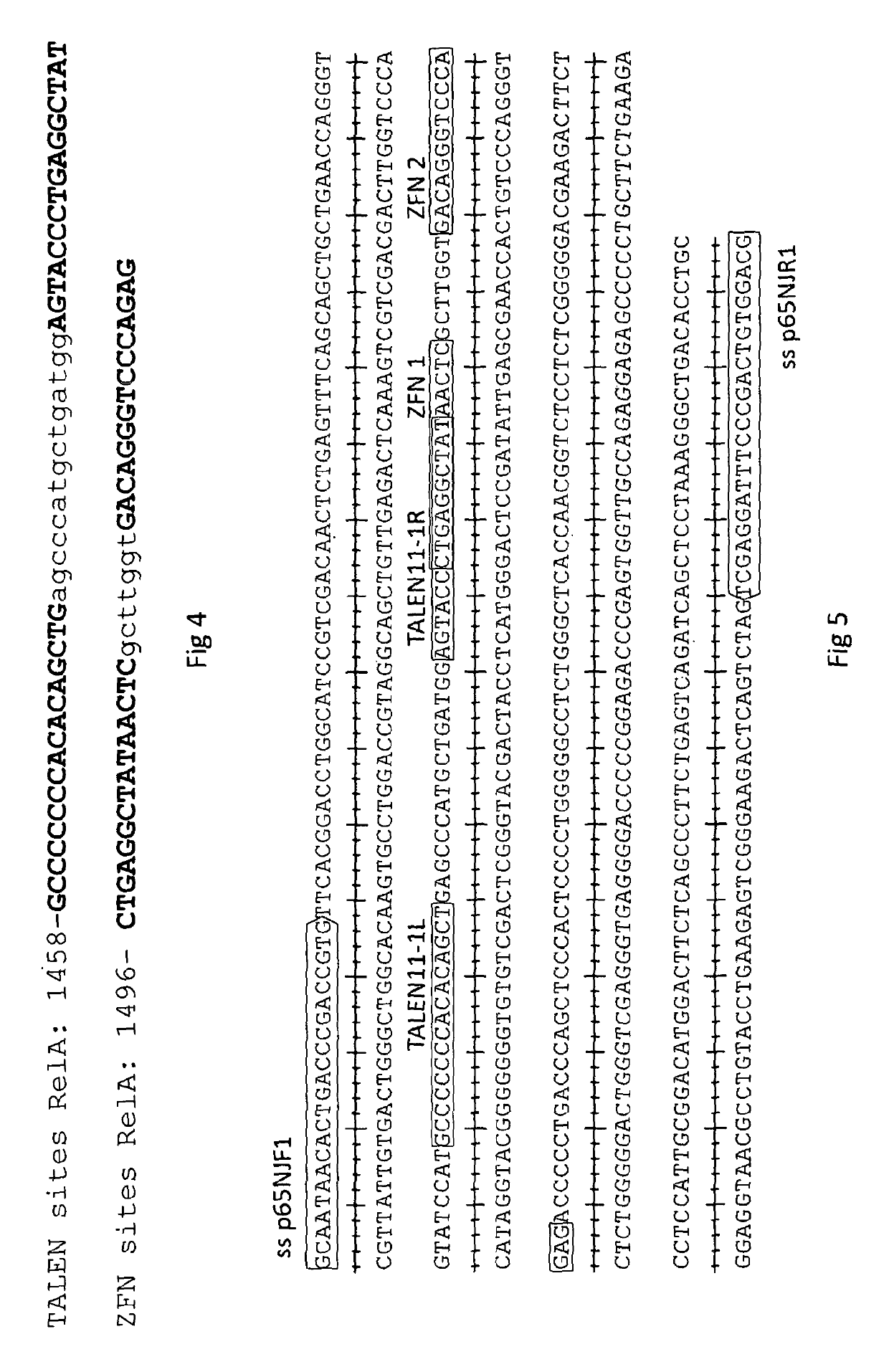Genetically edited pigs comprising a modification in the RELA gene
a technology of gene editing and pigs, applied in the field of gene editing pigs, can solve the problem of typically non-viability of animals, and achieve the effect of rapid but transient expression of nucleases
- Summary
- Abstract
- Description
- Claims
- Application Information
AI Technical Summary
Benefits of technology
Problems solved by technology
Method used
Image
Examples
example 1
Editor Design and Construction
[0121]Two types of editor were used: TALEN and ZFN. Both were designed to target the same region of porcine RELA gene.
[0122]TALEN: All TALENs were designed using the TALE-NT software and assembled using methods described in Cermak et al. (2011)—Nucl. Acids Res. (2011) 39 (12): e82. Briefly, intermediary arrays were produced for each TALEN pair that were compatible for Golden Gate cloning into pC-+63-TAL modified vector (although other vectors such as pC-+231-TAL, RCIscript-+231-TAL, pC-GoldyTALEN or RCIscript-GoldyTALENetc. could be used). Arrays were joined in the above vectors as follows; 150 ng each pFUS_A, pFUS_B, pLR-X and the desired backbone were mixed in a 20 μl digestion / ligation reaction including 50 units T4 DNA ligase (New England Biolabs) and 10 units Esp3I (Fermentas) in 1×T4 ligase buffer (New England Biolabs). The reaction was incubated in a thermocycler for 10 cycles of 5 min at 37° C. and 10 min at 16° C., then heated to 50° C. for 5 m...
example 2
Target Site Details
[0127]Target sites for the designed TALENs and ZFNs (FIGS. 4 and 5) (SEQ ID NOs 19, 29 and 37) are shown with reference to the nucleic acid numbering system of the RELA cDNA (as shown in FIG. 1), GenBank accession number NM_001114281 (SEQ ID NO 1); the TALEN target site is located between bases 1458 to 1505; the ZFN target site is located between bases 1496 to 1432. The full genomic Sus scofa genomic sequence NCBI Reference Sequence accession number is NC_010444 Assembly 10.2.
example 3
Production of Gene Edited Embryos
[0128]To establish the frequency of gene editing in pig embryos an in vitro embryo culture experiment was performed.
[0129]Pig ovaries were collected, washed with pre-warmed phosphate buffered saline at 38.5° C. and follicles aspirated. Oocytes were washed in TL HEPES PVA before culturing in maturation medium for 44 hours (22 hours plus hormones and 22 hours minus hormones; 38.5° C., 5% CO2), followed by gentle pipetting to remove cumulus cells and incubation with prepared sperm for 6 hours (38.5° C. in 5% CO2). Zygotes were transferred to NCSU-23 HEPES base medium and subjected to a single 2-10 pl cytoplasmic injection of mRNA at 2, 10 or 25 ng / μl. The 25 ng / μl mRNA sample consisted of 20 ng / μl of either a TALEN or ZFN pair mRNA and 5 ng / μl EGFP mRNA. The 10 and 2 ng / μl mRNA samples were dilutions of the 25 ng / μl sample. Zygotes were cultured in batches for 66 hours (embryo culture medium; 5% CO2, 38.5° C.), following which they were placed individua...
PUM
| Property | Measurement | Unit |
|---|---|---|
| concentrations | aaaaa | aaaaa |
| concentrations | aaaaa | aaaaa |
| concentrations | aaaaa | aaaaa |
Abstract
Description
Claims
Application Information
 Login to View More
Login to View More - R&D
- Intellectual Property
- Life Sciences
- Materials
- Tech Scout
- Unparalleled Data Quality
- Higher Quality Content
- 60% Fewer Hallucinations
Browse by: Latest US Patents, China's latest patents, Technical Efficacy Thesaurus, Application Domain, Technology Topic, Popular Technical Reports.
© 2025 PatSnap. All rights reserved.Legal|Privacy policy|Modern Slavery Act Transparency Statement|Sitemap|About US| Contact US: help@patsnap.com



